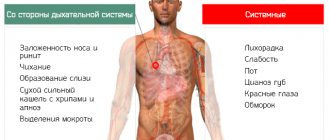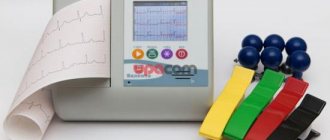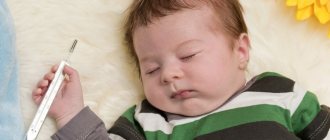Blowing your nose is one of the important skills you should teach your child. The vast majority of children get sick quite often, especially during adaptation to kindergarten. And almost every cold is accompanied by a runny nose and an active flow of mucus from the nose. This mucus accumulates a large number of bacteria that need to be removed.
The inability to blow your nose leads to stagnant processes - mucus accumulates in the sinuses and does not come out. This subsequently turns into bacterial inflammation, and the snot becomes purulent. In addition, a prolonged runny nose prevents sufficient saturation of the body with oxygen - the baby gets tired quickly, takes longer to recover, and becomes distracted. Due to the stagnation of mucus in the sinuses, his general condition worsens, the baby feels unwell and becomes lethargic. To avoid this, the snot must be taken out.
Show me how to clear your nose using your own example.
Take your time when trying to teach your child to blow his nose. The baby may not immediately figure out how to do everything correctly. It may take him a little time to understand that air is exhaled through the mouth and through the nose. Think about how to teach your child to blow his nose by example, and explain why you do it this way and not otherwise. If your child sees his siblings or his parents using tissues, it will be much easier for him to simply copy after you. Give him a pack of Zewa Deluxe soft tissues and paper tissues so that he always has them on hand.
It's easy to accidentally leave a pack of Kleenex in your pocket and throw it in the washing machine with your clothes. But don’t worry – Zewa Deluxe paper handkerchiefs are so durable that they won’t leave small paper particles on your clothes*.
When can you start teaching your child to blow his nose?
In a very small baby who does not yet know how to blow his nose, you can suck out the snot using a syringe or a special nozzle ejector (there are even devices that connect to an ordinary vacuum cleaner and, judging by the reviews of parents, they pull out all the snot perfectly, but many children are afraid of them because for operating volume).
But many kids protest very much when they get into their noses, to the point of hysterics at the mere sight of a “torture instrument” (pear, nozzle ejector or aspirator). Therefore, it is worth starting to teach your little one to blow his nose from a very early age, namely from a year and a half, when the baby already begins to understand spoken speech and can little by little fulfill the requests of an adult.
There are several play methods for teaching nose blowing, and the parents’ task is to choose those that the baby will like and lead to the desired result.
How to teach a child to blow his nose: fun games
One of the simplest and most enjoyable ways to teach a child to blow his nose is through games. Here are our favorite options:
- Soap Bath: While watching the children closely, show them how to blow bubbles in the bathtub by exhaling through their nose.
- Foggy glass: Have a competition to see who can make the glass fog up the fastest by breathing on it from your nose. Show your child how to close one nostril to make the process simple.
- Feather Races: Bring the whole family together for a feather race. Place the feathers on the table and blow on them with your mouth. Then repeat the race, this time using your nose to blow on the feathers, and choose the winner.
The science of blowing your nose correctly
Not all parents know that you need to blow your nose correctly. It is unacceptable to force a child to blow his nose with all his might, as this can provoke the occurrence of otitis (in young children, the structure of the nasopharynx is such that even a minor runny nose often leads to problems with the ears).
If necessary, in order to facilitate the process of mucus removal, you need to drop a little of any saline solution into your small nose, which is easy to prepare yourself (at the rate of 1 teaspoon of table or purified pharmaceutical sea salt per liter of water) or buy at a pharmacy, and a little wait. At the same time, the snot will become more liquid and it will be much easier to blow your nose.
You also need to remember that you cannot blow your nose from both nostrils at once . From childhood, it is important to teach your baby to first release one nostril (clamping the second one), and then the other. And, of course, you need to change scarves in a timely manner or use disposable paper napkins.
Nasal congestion treatment at home. What helps with a runny nose and nasal congestion?
There are several basic methods for treating a runny nose:
- distraction therapy,
- instillation of medications into the nasal cavity,
- massage,
- warming up the nasal area,
- inhalation rinsing the nasal cavity.
Some of the methods are traditional, while others are recommended by traditional medicine. However, the final choice in favor of one technique or another is usually made by the patient himself. The advantage of traditional methods is their low cost, and also the fact that they are based on natural ingredients. However, pharmaceutical drugs often act faster.
Categories of medications often prescribed by doctors for the treatment of rhinitis:
- antibiotics,
- antihistamines,
- vasoconstrictor drops and sprays,
- saline solutions,
- moisturizers and anti-inflammatory agents.
Antibiotic medications are effective only for bacterial rhinitis. They effectively destroy pathogenic microflora, resulting in the elimination of the immediate cause of the disease.
Antihistamines are prescribed exclusively for allergic rhinitis. They reduce the impact of allergens on special receptors in tissues responsible for the development of an allergic reaction, reduce the permeability of vascular walls and swelling.
Vasoconstrictors (adrenomimetics) contain analogues of adrenaline. They operate only at the local level. For viral, bacterial, viral and vasomotor rhinitis, they quickly reduce swelling of the mucous membrane. The disadvantage of vasoconstrictors is the rapid addiction to them, and the resulting limited period of their use.
How to blow a child’s nose if he doesn’t want to blow his nose, or how to force a child to blow his nose?
Modern parents do not always pay attention to such a serious question: “how should a child blow his nose?” However, this is a very important moment in his life for a number of reasons:
- Mucus in the nasal passages can impair breathing through the nose, leading to problems such as ear infections or sinusitis;
- It is easier to teach a small child to blow their nose because they love to imitate their parents.
How to blow your nose with rhinitis
When you have a runny nose, it is recommended to blow your nose through one nostril, while blocking the other. Because, according to experts, if you blow your nose through two nostrils at once, an infectious pathogen can penetrate the ear canal area and provoke a complication such as otitis media.
You need to blow your nose carefully. Without unnecessary stress. Otherwise, the risk of infection entering deep into the nasopharynx area increases, which will also lead to the development of a number of associated complications.
With strong pressure, mucous secretions can settle in the paranasal sinuses, provoking the development of sinusitis and sinusitis.
In addition, such intense nose blowing negatively affects the condition of the nasal blood vessels and can cause bleeding.
If the patient has a cold accompanied by severe rhinitis and nasal congestion, the nasal passages should be rinsed. For these purposes, you can use nasal aspirators, rubber bulbs and disposable syringes. Rinsing can be done using pharmaceutical medicinal solutions or a saline solution prepared at home (a teaspoon of salt in a glass of warm water).
You should rinse your nostrils one at a time. When rinsing the left nostril, it is recommended to tilt your head slightly to the right, and when rinsing the right nostril, tilt it to the left.
This simple tip will help prevent rinsing solution from getting into your ears.
Under no circumstances should mucous secretions or rinsing solution be drawn into the nasopharynx area, as this contributes to the spread of the infectious process.
When blowing your nose, be sure to use sterile, clean tissues. Disposable paper tissues are ideal for these purposes.
If you use the same scarf for a long time, germs can accumulate in it, which can lead to re-infection and slow down the healing process.
In addition, make sure that the scarves are soft enough so as not to irritate the skin and nasal mucous membranes.
In order to prevent the nasal mucous membranes from drying out, it is necessary to take care of a favorable microclimate in the room. Use special air humidifiers or vessels with clean water for these purposes.
Don't miss
Nasal drops are a separate issue. Even adults find it very unpleasant when they leak into the throat and cause a burning sensation. And it is almost impossible to force children to bury them again after this. How to avoid this?
- It shouldn't be like this. It seems that in such cases the drops are simply used incorrectly,” explains Professor, Doctor of Medical Sciences, chief freelance otolaryngologist of the Main Medical Directorate of the President of the Russian Federation, head of the Department of Otorhinolaryngology of the Central State Medical Academy Vladimir Kozlov .
- When the nose is stuffy, due to swelling, they cannot immediately flow into the throat. I recommend instilling them only when the nose really cannot breathe. You can also use a spray; it irrigates the nasal cavity very well and evenly. It is important not to use such vasoconstrictors for more than 5 days, as they can cause dependence.
A lot of such drops and sprays, which constrict blood vessels and relieve swelling of the mucous membrane, thereby normalizing breathing through the nose, are sold.
They may have different names, but all the active substances in them have a similar effect.
Here are the most typical active substances in such drugs - xylometazoline, naphazoline, oxymetazoline, indanazoline, tetrizoline, etc. You can always find out about their presence by reading the instructions.
Preparations with sea water are also sold; they can also be either drops or sprays. They are not cheap, and naturally, many people want to replace them with a simple salt solution. Is this an equivalent replacement?
“I don’t see much difference between a regular salt solution and preparations with sea water,” says Vladimir Tatochenko. — Salt on the tip of a knife, dissolved in half a glass, copes well with a runny nose, often no worse than vasoconstrictor drops. I've been using it myself for many years.
Salted water rinses and cleanses the nasal mucosa well, thereby facilitating the work of the cilia and reducing swelling. But ready-made preparations with sea water are not bad, they work in the same way. In a certain sense, they are more comfortable, especially sprays. And if you like them better, you can use them, I don't mind.
Sometimes they say that they also contain useful iodine. But I think this is marketing, its dose there is scanty.
Circumstances influencing the appearance of nasal discharge
Dr. Komarovsky identifies several factors that traditionally cause snot in a newborn:
- Almost immediately after birth, a little mucus from the nose is physiological in nature and is normal. If there are no signs of a cold, and the discharge is small and clear, then there is no need to treat it. They will go away on their own within about 2 months. Such snot indicates a restructuring of the respiratory system of a newly born child and its adaptation to new living conditions.
- The causes are infectious. Often the appearance of snot occurs after a viral infection enters the baby's body, which is usually transmitted by airborne droplets. In infants, infection with a viral infection occurs very quickly, its symptoms are pronounced. But you shouldn’t worry too much - the protective properties of the body and the immunity of the newborn are still very high, and therefore viruses and bacteria that enter the child’s body die almost immediately. But still, due to age, viral causes of mucus require contacting a pediatrician.
- Allergic reasons. Infants who breathe through their nose often experience symptoms such as a runny nose due to household allergens (dust, pet hair, flowering of certain plants). An allergic runny nose always requires a search for the cause of its appearance, that is, the allergen.
- The cause of the appearance of snot may be the reaction of the vessels of the nasal mucosa to any external irritants, for example, a strong irritating odor, dry air in the room, that is, individual environmental circumstances become an obstacle. Usually they provoke attacks of sneezing, congestion and copious mucus from the nose. The discharge will stop if the provoking factor is eliminated.
- Enlarged adenoids can cause snot and nasal congestion in a child. As pediatric otolaryngologists explain, soon after the birth of a child (due to his physiological development), his adenoids begin to rapidly enlarge, which also sometimes becomes a provoking moment for the appearance of discharge.
- Often, a child’s snot is associated with the time of eruption of the first teeth.
How to blow your child’s nose correctly – ENT diseases
The three most common causes of a runny nose are colds, sinusitis, and allergic rhinitis. Each of these conditions causes the nose to become swollen and produce extra mucus, which washes away infection, irritants, or allergens.
Both the swelling and the extra mucus lead to nasal congestion. Removing mucus by blowing your nose slightly reduces this accumulation.
Infants and children under 3 years of age do not yet know how to coordinate the mechanics of nose blowing. They tend to repeatedly suck thick mucus back into the nose or allow it to drip down the upper lip.
It is believed that storing this mucus (rather than blowing your nose away) contributes to a cycle of irritation that causes a runny nose to persist for weeks or longer.
This is because unremoved mucus acts as a good home for bacterial growth.
Thick mucus can also be carried from the nasal passages to the throat by gravity, leading to irritation and coughing. This mechanism underlies the most common cause of prolonged cough following a viral infection or allergic rhinitis.
What does a runny nose lead to?
A runny nose in children can cause the following negative consequences.
- Due to difficulty breathing, the child begins to breathe through the mouth, which leads to the development of tonsillitis or adenoiditis.
- Fluid flowing from the nose irritates the skin above the lip, causing inflammation and infection.
- In children, long-term colds often turn into otitis media; for a small child this poses a great danger.
- The functioning of the respiratory system is disrupted, because of this the cardiovascular system also suffers.
- The child gets tired quickly, becomes restless and lethargic.
- The child's sleep is disturbed and loss of appetite occurs.
Based on the above, it makes sense to encourage children to blow their nose to remove unwanted mucus.
What happens when a child blows his nose?
Let's start with a closer look at the structural features of the nasal passages.
Inside the nostrils are the turbinates, which, when healthy, are the same pink color as the gums of the mouth. Nasal mucous membranes that are red or bluish may signal allergies or infection.
The nasal passages are lined with tiny hairs (villi) that form a line of defense against foreign objects. When debris, bacteria, viruses or fungus are inhaled, the villi trap them and prevent them from entering the lungs.
The hypersensitive villi are designed to respond to other conditions, such as an increase in sticky mucus caused by cold or allergies. When the villi encounter this, they begin to move faster and push these unwanted “guests” towards the nasal passages. Sometimes the child is required to help these villi in the form of blowing his nose.
Blowing your nose is a complex procedure that is second nature to most people and helps you stay responsive to what's going on in your nostrils. When a baby blows his nose, he forces air out of his nasal tubes, along with debris and mucus.
However, if a child has severe inflammation of the nasal mucosa, it may be almost impossible to breathe through the nose. If you ask your child to blow his nose anyway, it may push infected mucus into the sinuses.
A 2000 study found that when children tried to blow their nose with congestion, mucus was pushed into the sinuses, causing a significant increase in pressure in the internal structures of the nose, which could negatively affect the eustachian tubes.
There are proper techniques that can minimize the risk of mucus moving up into the sinuses, reducing the risk of injury.
- Have your child gently blow air out of his nose. Exhaling too much creates even more pressure, which can force infectious mucus into children's ears and sinuses.
- Avoid blowing from both nostrils. Instead of this:
- close one of the baby's nostrils;
- ask your child to gently blow his nose into a piece of paper through one open nostril;
- close the other nostril and ask your child to repeat.
- After waking up in the morning, the child's nose will be practically clogged. You should not immediately ask him to blow his nose. It's better to wait, stand for five or ten minutes.
- Offer your child plenty of fluids. This will make it easier to remove mucus by gently blowing your nose. Blowing your nose can also be made easier by taking a steam shower.
- Use paper napkins rather than cloth handkerchiefs. A used handkerchief is a breeding ground for germs, and repeated use spreads germs to the skin around the face and hands.
- Use the paper towel only once, then throw it away. This minimizes the risk of germs returning to your face and hands.
- Wash your hands when you're done, as germs from your nose and tissue will be transferred to your fingers when you blow your nose.
How to teach a child to blow his nose?
When you become a parent, you need to realize that your child needs to be taught skills that adults take for granted.
The simple task of blowing your nose seems easy for adults, but it can be as difficult as learning a foreign language for a child.
When you try to explain how this task is performed, you will find that the child does not want the napkin near his nose.
Teaching children to clear mucus from their noses on their own can be difficult.
The sequence of developing the skill of independent cleansing of the nasal cavity
These are typical age ranges for a breakdown of the skill required to become independent in clearing nasal mucus.
- 1 year - the child allows you to wipe your nose.
- 1.5 years - the baby makes attempts to wipe his nose without actually completing the task.
- 2.5 years – the child wipes his nose upon request.
- 2.5-3.5 years - wipes nose without asking.
- 2.5-3.5 years – blows nose upon request.
It should be noted that children do not always follow these developmental milestones and that every child is different. Sometimes children cannot blow their nose until they are 5 years old. As with any skill a child learns, there are different ranges of development.
Parents wondering how to teach a 1-year-old child to blow his nose are in a bit of a hurry. The best time to start studying is 2 years. A one-year-old child still cannot understand what adults demand from him.
Most children are experts at blowing air out of their mouth. This comes from the training they get from making bubbles and blowing out candles on a birthday cake. Understandably, blowing air out of their nose may not be as familiar.
Train your child to gently blow air out of their nostrils. You may be able to get your child to try this in a playful way.
- It is necessary to teach a child to blow his nose only when he is absolutely healthy, in a good mood, and his nose is breathing freely. Otherwise, the mother will only receive hysterics and whims.
- You should take into account the fact that at first nothing will work. Therefore, parents must be patient, encourage the child and set him up for a positive outcome.
- If during training the child suddenly becomes ill, the training must be postponed.
For this you can use the following games.
You need to put a small feather on the table. If you don't have one, cut small pieces of paper. The child should blow on the feather with his mouth. Then mom asks him to do the same, only with his nose. It is also necessary to explain that you can blow air from only one nostril and close the other with your finger.
"Aircraft"
There is no need to make airplanes for the game. They can be easily replaced with candy wrappers, paper, pieces of cotton wool, and small napkins. The plane should be placed on the airfield (child's palm), and you are invited to start blowing. To do this, take a deep breath and blow the air out through one nostril. You can organize a game competition “Who will launch the most planes.”
"Hedgehog"
Invite your child to play hedgehog. You will need a toy hedgehog or a picture of one. An adult first demonstrates how a hedgehog puffs. Then the child does the same.
"Train"
Children will be happy to pretend to be a train. Tell your child that nostrils will replace the chimneys of a locomotive. You need to buzz them one by one.
"Fog"
Ask your child to close one nostril and blow air through the nose onto the mirror to create a foggy spot.
Eventually, your baby will need to learn to gently push air out of one nostril at a time. The correct way to blow your nose is to pinch one nostril with your finger to release air from the opposite nostril. Then repeat on the opposite side.
Once your child understands how to control the flow of air from their own nose, they are ready to try using a tissue.
First, hold the napkin instead of your child to show him where to place it. The child should not pinch his nostrils or wipe his nose until he begins to blow out air. Again, this sounds simple, but it may take a few tries to get it right.
So your child will need to practice placing the tissue right at the base of the nose and holding it with their fingertips.
Your child will first need to learn to blow his nose using both hands, and then he will learn to use a tissue with one hand.
Parents should be gentle and patient. You should not force your child to perform actions; he should show interest and desire himself. Think creatively, taking into account your child's needs. And you will succeed.
Article rating:
Source: https://lorbolesn.ru/kak-pravilno-vysmarkivat-nos-rebenku.html
What to do if a child does not know how to blow his nose
It is difficult for babies in the first years of life to blow their nose, so special aspirators must be used to remove mucus.
There are many models on sale to suit every budget. The simplest nozzle pump is a rubber syringe with a silicone tip. You need to press the bulb, the tip is inserted into the child’s nose, and then carefully release the walls of the syringe. The second nostril should be closed with your fingers. This creates a vacuum that draws out the accumulated mucus. In addition, there are more modern aspirators that run on batteries or a vacuum cleaner. Some models work with the help of the mother - she herself sucks in air through a long tube, forming a vacuum in the baby’s sinus cavity. Remember that before you suck out the baby's mucus, it needs to be softened. To do this, place a drop of saline solution into each nostril. After some time, the mucus can be sucked out. And medications should be instilled into a clean nose. If you are unable to remove mucus in this way, be sure to contact an ENT specialist. He has a special apparatus, which is popularly called “Cuckoo”. Using a vacuum, it sucks out all the mucus. The medicine is poured into one nostril, and the machine sucks the liquid out of the second nostril. This will allow you to not only thoroughly cleanse the sinuses of mucus, but also disinfect their surface to suppress re-inflammation.
how to stop a child from picking his nose










